A “fastidious chronicler of the vagaries of women’s lives in England since the early nineteen-sixties” (Joyce Carol Oates, The New Yorker), Margaret Drabble was born in Sheffield and began writing novels “to keep myself company,” as she said in 2011. Her first novel was published in 1963, and she said that she had recently gotten married, with one child and another on the way, and found that “writing was such a convenient career to combine with having a family.”
For the next half-century, Drabble would continue to produce a staggering array of acclaimed realist novels, often centered on her own life experiences and reflective of the lives of women everywhere. “Drabble’s heroines have aged with her,” Hilary Mantel wrote in the New York Review of Books, “becoming solid and sour, more prone to drink and swear; yet with each successive book their earnest, moral nature blossoms.”
Over the years, Drabble has been appointed Dame Commander of the Order of the British Empire, and has been honored with the John Llewellyn Rhys Memorial Prize, the James Tait Black Memorial Prize, the E. M. Forster Award, a Golden PEN Award, and more honorary degrees than you can shake a stick at. Through it all, she continued to write novels and short stories, with her most recent novel published in 2016.

A Day in the Life of a Smiling Woman
Though she is best known for her novels, Margaret Drabble also wrote numerous short stories between 1966 and 2000, all of which are collected in this ideal introduction to the talent that made her “one of the United Kingdom’s finest contemporary fiction writers” (Publishers Weekly).
In stories exploring everything from peace demonstrations to female friendships, Drabble’s complete short stories give new fans or established ones a perfect taste of the style and substance that have made her a favorite with so many readers over the years.
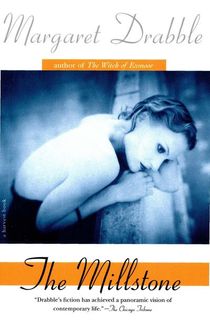
The Millstone
Winner of the John Llewellyn Rhys Memorial Prize, Margaret Drabble’s third novel, published in 1965, is also one of her most celebrated due to its “meticulous” (Los Angeles Times) look at the life of an unwed mother in London’s swinging ‘60s.
Possessed of a fierce independence and a brilliant academic mind, Rosamund Stacey is nonetheless unprepared for the trials and tribulations of motherhood. And yet, as “one of Britain’s most dazzling writers” captures both a moment in history and the timeless truths of the female experience (The New York Times Book Review), she may find that motherhood and independence are not as mutually exclusive as she had thought. On the book’s 50th anniversary, the Guardian declared it “the seminal 60s feminist novel.”

The Garrick Year
“A witty, beautiful novel … written with extraordinary art” (New York Times), The Garrick Year, like so many of Margaret Drabble’s other novels, draws on her own experiences, in this case her life on the stage, where she was a member of the Royal Shakespeare Company and an understudy for Vanessa Redgrave and Diana Rigg, and her marriage to fellow actor Clive Swift.
One can hope, however, that their marriage was less fractious than the one Drabble describes with such “unsparing” (Kirkus Reviews) prose in her second novel, which tells of the catastrophic breakdown in a seemingly perfect marriage.
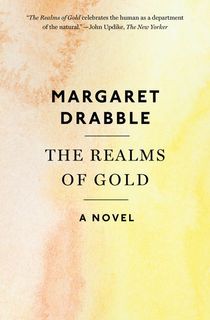
The Realms of Gold
Joyce Carol Oates called The Realms of Gold Drabble’s “richest, most absorbing novel.” It follows Frances Wingate, one of England’s most renowned archaeologists, whose own professional successes mask her struggles with children, family, and an on-again, off-again affair with a married colleague.
Read this unforgettable novel that is “alive with ideas” (New York Times) for yourself to see why John Updike raved that it “celebrates the human as a department of the natural” and remains one of Drabble’s most beloved works.
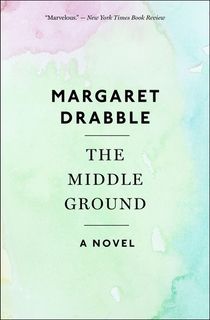
The Middle Ground
Written with “unfailing insight and intelligence” (New York Times), Margaret Drabble’s novel of a woman in her middle years – written when Drabble herself was entering her forties – was called “not a novel but a sociological treatise” by author and critic Margaret Forster.
For some, this is a bug, for others a feature, and many readers have praised the “essentially plotless” (Roberta Rubenstein) book, comparing it favorably to Virginia Woolf’s classic Mrs. Dalloway.
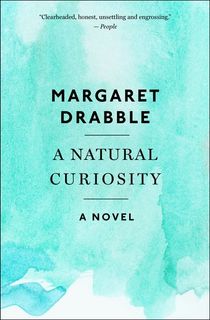
A Natural Curiosity
This “engrossing” novel (People) was, according to Drabble, an unintended sequel to her 1987 book The Radiant Way.
However, A Natural Curiosity can be read just fine on its own, and its story of three very different Cambridge-educated women living in Margaret Thatcher’s England provides a gripping view into recent history as “diverse plotlines develop amidst an abundance of social detail about 1980s Britain, providing a rich and fascinating texture. A winner” (Library Journal).
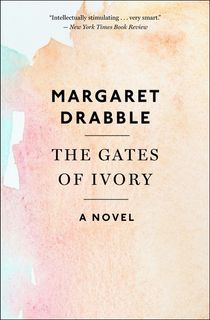
The Gates of Ivory
Continuing with many of the same thrilling themes that she explored in The Radiant Way and A Natural Curiosity, The Gates of Ivory follows a prominent London psychiatrist as she travels to the tumultuous landscape of Cambodia toward the end of the 20th century, where she believes that an old friend may have gotten into some terrible trouble as he tried to compose a play about the Khmer Rouge.
The result? An “unputdownable” (Edmonton Journal) “tour de force” (Calgary Herald) from one of England’s most celebrated authors.
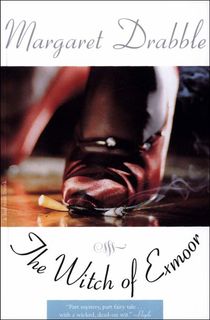
The Witch of Exmoor
A “postmodern family drama at its best” (Publishers Weekly), The Witch of Exmoor explores life in post-Thatcher Britain through a lens of Dickensian social satire.
This takes the form of the Palmer family – three grown children, with families of their own, and their powerful and puzzling mother, an acclaimed writer who has withdrawn to Exmoor, ostensibly to pen her memoirs. “Part social satire, part thriller, and entirely clever” (Elle), The Witch of Exmoor was named a Los Angeles Times Best Book of the Year when it was released in 1996.
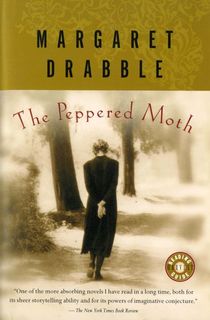
The Peppered Moth
One of Margaret Drabble’s most personal books, The Peppered Moth mixes fiction with biographical details of her own mother’s life to create an “absorbing” (New York Times Book Review) story of three generations of women in the same family, and the traits that they inherit from one another – whether they want to or not.
The result is one of Drabble’s most controversial novels, as it examines (through a fictional lens) not only her own family history and her fraught relationship with her mother, but also ideas of how genetic inheritance works, and what we can’t escape from, no matter how hard we try.
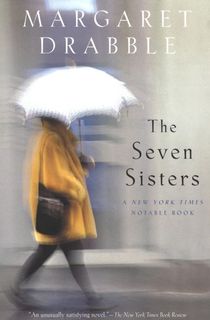
The Seven Sisters
“Engaging the emotions and the intellect simultaneously and possessed of a rare technical ease, The Seven Sisters is an unusually satisfying novel” (New York Times).
In this “teasingly clever” book (Publishers Weekly), Drabble’s characters continue to age with her, as Candida Wilton, estranged from her grown children and betrayed by her ex-husband, navigates her own midlife crisis by moving from a house in Suffolk to a two-room flat in central London. What she does there will change her life – and reading about it just might change yours.
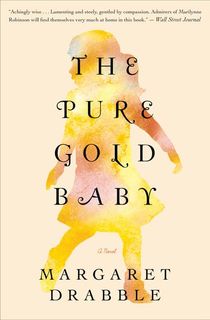
The Pure Gold Baby
In 2009, Margaret Drabble said that she was going to retire from writing for fear of “repeating herself.” Just four years later, however, it seemed that she couldn’t stay away, and The Pure Gold Baby was the result, her first novel since 2006.
In returning to writing, Drabble also returned to some of her earliest subjects, namely a single mother in 1960s London. However, the story of Jess, a young anthropologist who unexpectedly becomes pregnant after an affair with a married professor, and her daughter Anna, is something very different from the novels that Drabble wrote decades before, even while the subject matter may be similar. “Everything and nothing happens” writes the Independent, in this “moving testament to love, loyalty, and friendship between women.”

The Dark Flood Rises
A New York Times Notable Book of 2017, The Dark Flood Rises confronts questions of aging and mortality against a backdrop of potentially apocalyptic concerns including the ongoing climate and refugee crises that have gripped Europe and the world over the past decade.
The result is a book that is “witty and intelligent” and also “brimming with relevance” (Independent). Told from multiple viewpoints, it is the story of Fran Stubbs, a vibrant woman who has made a career as an expert in care for the aging, but must now confront aging herself.
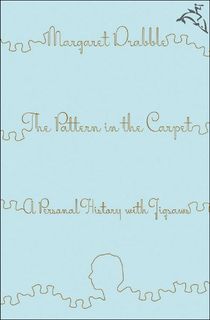
The Pattern in the Carpet
Margaret Drabble has always been a multi-talented woman with a wide variety of interests, and writing novels was only one of them. In this “charming” and “fascinating” book (Publishers Weekly), she introduces us to another: jigsaw puzzles.
By combining a history of the form with a memoir of her own life, she has created something more than either, a book filled with equal parts reflections on her life and family, insights into surprising historical facts (such as a boom in puzzle sales which followed the 1929 stock market crash), and philosophical meditations on the importance of play, the nature of memory, and the realities of aging.
